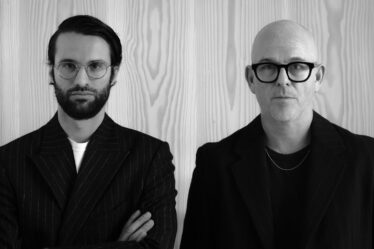
The last-minute rescue of a once-buzzy direct-to-consumer brand by an anonymous buyer is an increasingly common story as funding dries up for unprofitable start-ups, and consumers turn back to familiar names.
In May, Outdoor Voices was acquired by Consortium Brand Partners, after the activewear brand had closed its stores and fired most of its corporate staff. Activewear retailer Bandier sold to BC Brands in January, and Gen-Z intimates favourite Parade was acquired by Fruit of the Looms licensor Ariela & Associates International in August after struggling to raise money. Watchers of this space say there are almost certainly more emergency deals to come.
What happens after the fire sale is less predictable.
Many brands face a bleak future, even if they are rescued from the brink. Often, the priority for new owners is to sign licensing deals, while cutting investment in design and marketing to the bone. After an initial spike, revenue dwindles as consumers catch on that their once-buzzy label is now little more than a logo. The brand is then sold on, or quietly shut down.
Consortium Brand Partners says it’s hoping to chart a different path for Outdoor Voices. True, it’s pursuing licensing deals that would capitalise on the brand’s original appeal as a colourful athleisure go-to for Millennial runners. But it’s also reinstalled previously furloughed employees, including members of the design team, and plans to handle some new products in house. Brand president Katie Siano is staying on.
“We’re really not just looking at this as a financial investor. We’re a team of brand managers and operators,” said Cory Baker, Consortium Brand Partner’s founder and managing partner. “Working with the legacy teams [and] relying on their institutional knowledge is crucial to be able to make the right decisions.”
Can it work? Turning around a distressed brand requires striking a tricky balance between preserving the best parts of its original identity with operational efficiencies that can alienate consumers and creative talent. Outdoor Voices has resisted previous attempts to turn its cultural cachet into a profitable business, first under founder Tyler Haney and then entrepreneur Ashley Merrill, which bought a majority stake in the company in 2020.
“It should not be a process of preservation, it should be a process of evolution,” said Laurent Ohana, senior advisor at investment bank Ohana & Co., which specialises in advising fashion and beauty brands. “How are you going to make this business evolve so you can be successful?”
Resetting Expectations
The most important step a new owner can take is to set in motion a sustainable, long-term growth plan. Often that means setting aside dreams of becoming the next Nike or Louis Vuitton.
When The Hedgehog Company, a buyer of distressed DTC brands, acquired bag maker Baboon to the Moon last July, the brand had raised around $10 million to ratchet up sales to more than $100 million. It operated at a loss, which overshadowed any increase in revenue.
Hedgehog switched Baboon to the Moon to a less-expensive logistics provider and reduced marketing spend from 30 percent of revenue to less than 20 percent. It also invested in areas such as gifting to TikTok influencers, which it saw as a low-cost way to find new customers and boost repeat purchases.
Baboon to the Moon is now generating revenue above $10 million, with gross margins over 50 percent and positive earnings before interest, taxes, depreciation and amortisation, said Fan Bi, chief executive at The Hedgehog Company.
“We’re fine and happy with and focused on being a profitable niche brand [and] if the market happens to take us to the next level above that, then great,” Bi said. “Oftentimes we’re helpful in resetting expectations.”
Some new parent companies are also finding ways to maintain a bond with a brand’s existing customers even as they’re cutting costs.
While Consortium plans to expand product lines at both Outdoor Voices, including swimwear, loungewear and footwear, it isn’t doing so without first chatting with customers about what they would want from the brand, Baker said. This year, Consortium plans on holding events Outdoor Voices became known for, such as community runs and hikes.
“You can’t walk into a new investment with the hubris and the arrogance that you already understand more than the consumer does,” Baker said. “A quick grab at a product or a revenue or a collaboration … is ultimately a short-sighted strategy.”
Circumnavigating Challenges
One of the most direct ways for a new owner to preserve a brand’s identity is to keep as much of its original team as possible.
When footwear licensing and holding company Titan Industries acquired shoe brand Tamara Mellon, founded by a former Jimmy Choo designer, last July after it hit a growth wall, it set out to relaunch the product offering. Titan also owns Clergerie and Badgley Mischka and does footwear licensing for L’Agence. Instead of having its in-house designers take over, it kept Tamara Mellon’s existing design team in place, which is overseen by Mellon herself, to create a new line of strappy sandals in the brand’s signature jewel tones and embossed prints.
Titan is also rethinking Tamara Mellon’s pricing and retail distribution strategies to grow sales without cheapening the brand. The company lowered Tamara Mellon’s prices by at least 20 percent in preparation to reenter the brand into wholesale, said Joe Ouaknine, chairman and chief executive of Titan Industries. But it’s not rushing to get there or overextending the brand to any retail door it can find. The company plans to sell Tamara Mellon’s wares in Neiman Marcus and Saks Fifth Avenue next spring as a start.
It’s unclear whether a new parent company can fully revive a brand’s original appeal once it’s died down. But the post-acquisition strategies with the best chances of success are ones where a seasoned owner knows how to invest in what works for a specific brand and quickly pivot away from what doesn’t, said Bill Detwiler, managing partner at Fernbrook Capital.
“The companies that do it well have very experienced M&A corporate development teams that are highly focused on post deal integration,” Detwiler said. “They have a very well laid out plan set by an experienced management team that has shown a degree of high-quality acquisition experience and they’re just able to execute.”



